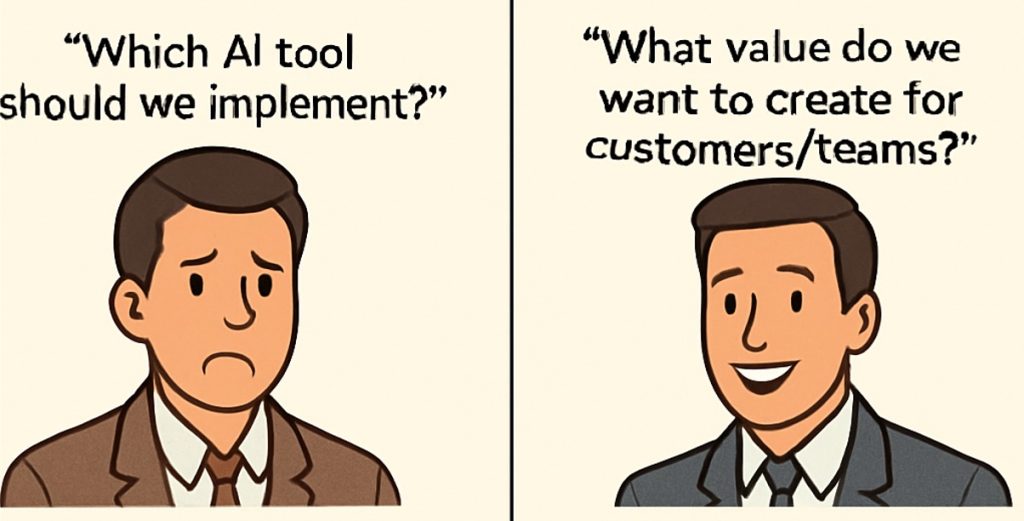In our Product Visioning series, we have already explored Elevator Pitch and User Persona.
Just to recap, the importance of identifying right target persona:
- Helps in building great products that our customers like and use
- Efficient product prioritization and smart investment results in better ROI
- Helps in improving marketing teams’ productivity
- Improves our brands messaging
After identifying the target personas, we have to detail out their goals / motivations, pain points and what they would gain by using the product / service. We collect these useful information through market research, user interviews, observing target users, by collecting information from their interactions with various touch points of our product or service, etc.
Goals / motivations are some of the wishes / requirements of the customer that drives their interaction with our product or service.
For Example:
- One of the motivations of a customer in an ecommerce site would be an ability to search, compare and buy a smartphone within their budget. They would also want to see the user ratings and reviews of the product.
- If we are building an education content delivery software for schools, one of the goals of teachers would be to be able to customize the content in the way they like.
Pains are challenges or frustrations the customers face in doing their work and / or achieving their goals.
Here are some questions to help uncover the customer’s pains:
- What frustrates our customer about their current situation?
- What is their worst fear? What are they trying to desperately avoid?
- Why are they so worried about that? What would that mean for them?
Example:
We are familiar with the battle amongst the eCommerce giants in India. One of them achieved a significant increase in sales and market share by introducing Cash On Delivery, to address a key challenge faced by their target segment.
The gains are benefits if and when the customers use our product or service.
Some of the questions that could help us understand the customer’s gains:
- What do they wish they could change about their current situation?
- What is their dream? What are they desperately hoping to achieve?
- Why is getting that outcome so important? What would that mean for them?
How do we use it?
Once we understand the goals, pains and gains, we will be in a better position to build and prioritize our product features in such a way that:
- Enhance the user experience while helping them meet their goals
- Relieve the customer’s pains by providing software / service solutions where ever possible
- Enhance / amplify the customers’ gains
How is this relevant in Software Development?
Such a structured approach in understanding and representing customer’s interests and challenges, helps in building products or services that are valuable for them. The product organizations would be able to channel their time and money in maximizing the Return on Investment.
An example:
Say, we are building a product for K12 segment. We may map School Principal of a particular segment in the following manner:
(Disclaimer: This is just an example. Resemblance to any individual or organization, if any, is not intended, may only be a coincidence)
School Principal:
Roles / Goals
- Teacher
- Hiring teacher
- Assess teacher capability
- Form and Execute training plan
- Mentoring
- Text book selection (map syllabus to book)
- Teacher scheduling & allocation
- Feedback / review cycle (teacher effectiveness)
- Setup & Monitor scoring rubric for assessment
- School admin reports and regulatory compliance
- School performance
- Engage with Peers (schools / principals)
- Participate in meetings and conferences
Pains
- Admin / Hiring / Training
- Transactional exception management
- Leave of absence
- Admissions
- Student Injuries
- Transport
- Teaching Logistics
- (stationaries, books, papers)
- Event Management
- [budget planning, to event co-ordination]
- Syllabus coverage
- Board & competitive exam preparation
- Ad-hoc regulatory compliance
- Performance management
Gains
- Be known as ‘educationist’ (Peer and industry recognition)
- Social recognition of school
- Student performance
Next in series:
Product Visioning: 2.3 Building Hypotheses using Persona and their Goals, Pains and Gains.
After identifying our personas and detailing out their goals, motivations, pain points and gains, we have to arrive at certain hypotheses about target user segment so that we can build and prioritize our product features around those hypotheses.





